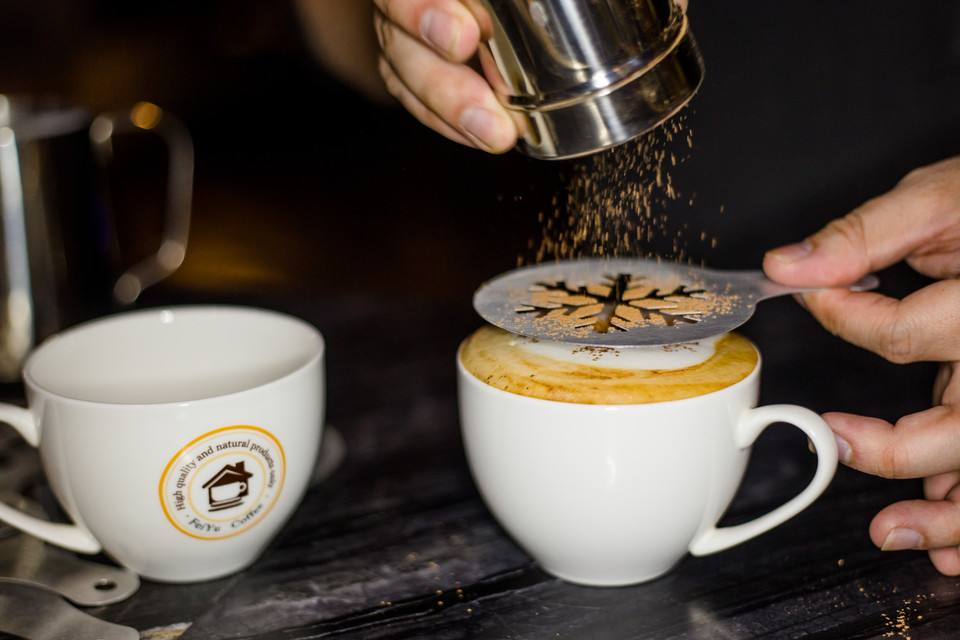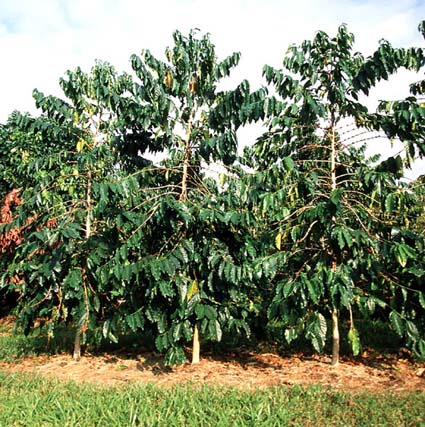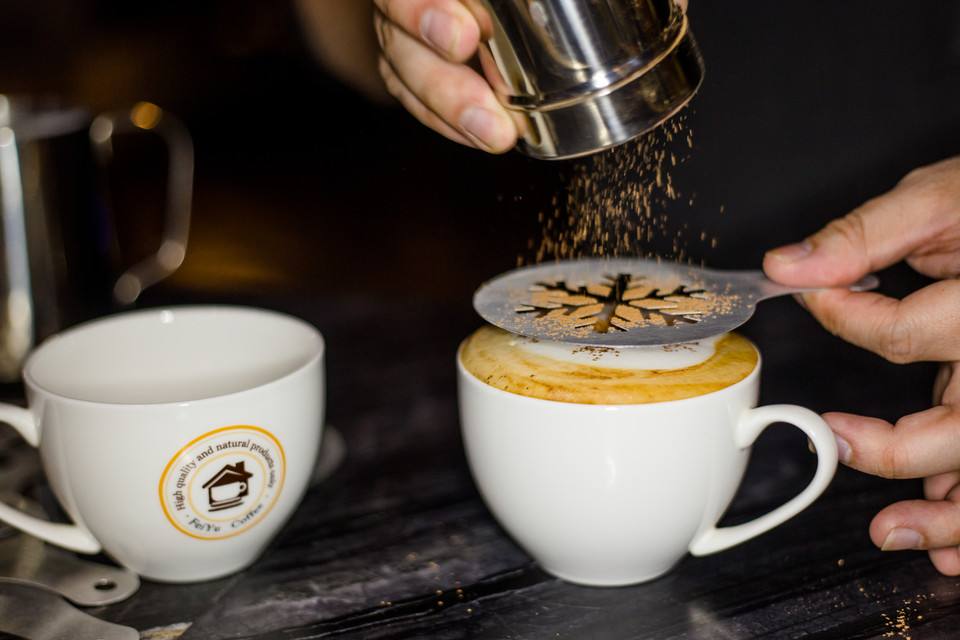Coffee Learning: the Theory and Technology of making Coffee Beverage
Follow the caf é (Wechat official account vdailycom) and found that Beautiful Cafe opened a small shop of its own.
Classification of coffee drinks
If you want to understand coffee drinks, you must first classify coffee drinks properly. In order to better understand these coffee drinks, and their extraction principles and production techniques.
First of all, it needs to be explained that some people may have different views or practices on classification. However, in principle, the classification method is only a means, and there is no difference between right and wrong; whether it is convenient or not is conducive to understanding and analyzing the problem of the object being studied. So which classification is more suitable depends on the individual's understanding.

We divide all coffee drinks into three categories
Basic coffee
The coffee produced by directly grinding the coffee beans into coffee powder and using appropriate tools is the basic coffee.
Fancy Coffee
In the basic coffee, fancy coffee is made by adding certain ingredients or after a certain preparation.
Iced coffee
Similar to fancy coffee, but made into a "cold" coffee drink
(I) basic coffee
The classification of basic coffee may be the most dissenting, but this is also the most important point. Whether this classification is appropriate or not has a direct impact on our understanding and research on coffee drinks. Our classification method is based on the history of coffee beverages and the principle of coffee beverage production.
In addition to the oldest and most traditional way of drinking coffee among Ethiopians who first started drinking coffee, the first is Arabian coffee, which is the most popular in the Arab region (some people call it Turkish coffee). After coffee entered Europe, it evolved into the most popular coffee for a long time. After that, the Italians invented espresso, espresso, and evolved a series of coffee drinks based on espresso, which were promoted by Starbucks and became popular all over the world. So we divide the basic coffee into the following three categories
Arabica coffee (including Turkish coffee)
Extraction conditions, high temperature, atmospheric pressure, non-filtration
Drip filter coffee
Extraction conditions, high temperature, atmospheric pressure, filtration
Italian Coffee
Extraction conditions, high temperature, high pressure, filtration
The difference between the first two basic coffees above is whether they are filtered or not, both of which are made at high temperature and atmospheric pressure. So in fact, the taste of the coffee produced is not very different, very close. Because their production principle is the same, the only difference is filtering and non-filtering. But because Arabica coffee is spiced, and it is made by ultra-fine grinding of coffee powder. So the taste will not be the same, which may be the reason why many people prefer to think of them as two different coffee drinks.
It is precisely because Arabica coffee and drip filter coffee are extraction processes at high temperature and atmospheric pressure, so when we analyze and study the extraction process of coffee, we do not analyze Arabica coffee alone, but only analyze drip filter coffee. The same principle applies to Arabica coffee.
Here, we want to correct a concept that has spread widely and has not been understood and clearly distinguished for many years, that is, the so-called "Turkish coffee" actually refers to "Arabica coffee".
Arabica coffee and Turkish coffee are almost identical in every aspect, except that Turkish coffee is ground into powder immediately after roasting and then packaged into bags for sale. Arabica coffee is also ground into powder after roasting, and then some unique Arab spices (such as cardamom, cinnamon, etc.) are added and then packed into bags for sale.
So after ordering a cup of coffee in an Arab coffee shop, the waiter will bring up the coffee and attach a sugar packet for customers to add according to their own taste. But in Turkey, when customers order coffee, the waiter will ask you how much sugar you add (usually use cube sugar, you can choose one or two), and then the waiter will put the sugar in the coffee according to your request. The brewed coffee has already added the sugar you want. So after the coffee is served, you can drink it without adding sugar or stirring.
As we mentioned earlier, some people use different classification methods. The main difference lies in a more detailed classification of coffee made by various drip coffee making tools, such as French pressure pot coffee, siphon pot coffee, hand brewed coffee, and so on. Because we think that the coffee made by these tools is made at high temperature and atmospheric pressure in principle, there is little difference in taste. Even if there is a slight difference in taste due to different details, the difference is not big. And through appropriate adjustments, so that different production tools are made under the same conditions, at least in principle, or in fact, their coffee tastes exactly the same. In order to better understand the process of making this kind of coffee, we think of them as the same kind of coffee.
As to which classification is more suitable, it depends on your own understanding.
With regard to the last espresso, this is the most important and crucial. This is not only because it is the core product of cafes all over the world, but also because it is very difficult to make this coffee, which makes it necessary and important to train the production of coffee. Long before espresso became popular, there was no need for training to make coffee. Generally speaking, it can be basically mastered after taking up the post and practicing several times under the leadership of the old master. But after more than 20 years of espresso popularity, people have come to realize that it is almost impossible to learn to make espresso without correct and effective guidance. Therefore, coffee training has gradually become popular and flourished.
In order to enable beginners to better understand and accept the principles and techniques of coffee production, we will explain drip coffee and espresso separately. Because the production principle and technology of these two types of coffee are completely different.
(2) fancy coffee
In principle, fancy coffee is in the basic coffee, by adding certain ingredients, or after the proper preparation of the coffee drink is called "fancy coffee".
However, all kinds of fancy coffee made from drip coffee have almost disappeared, which have been popular for many years in history, even until more than 20 years ago. Finally, after espresso became popular all over the world, the last kind of French milk coffee (that is, lady's coffee, or Ole coffee) that French coffee lovers had enjoyed with breakfast for many years, latte coffee was not only accepted by the French, but also replaced Ole coffee in French cafes as one of the French's favorite coffee drinks.
This fact illustrates a problem, at least in my opinion, that is, fancy coffee made from drip coffee cannot be compared with fancy coffee made from espresso. This shows that any attempt to make fancy coffee from drip coffee is unlikely to succeed. This is definitely the advantage of espresso. So I'm basically sure that it's unlikely to succeed if you don't try to make fancy coffee from drip coffee.
The fancy coffee that is really popular so far is based on espresso, a few of which have been popular for many years (at least decades) in the old world such as Italian coffee.
So we subdivide the fancy coffee into the following two types.
Traditional fancy coffee (also known as "standard fancy coffee")
First of all, it has been popular for a long time and has almost developed to the point of perfection.
Secondly, it is so popular that people almost all over the world have a certain concept of this kind of coffee.
Non-standard fancy coffee
The popular time is short, and most of them are understood by the developers personally; therefore, their production may not be perfect.
In addition, the popularity is so narrow that few people know about it, so there is no specific concept of this kind of coffee.
The characteristics of the above two kinds of fancy coffee are different as described in the introduction. The reason why we want to carry out this classification is mainly from the commercial operation to consider the following two aspects: one is because the traditional fancy coffee has been popular for a long time, its production has basically reached a perfect level, it is generally difficult to improve better. Secondly, because this kind of fancy coffee is very popular, people everywhere have a certain concept of this kind of coffee and its taste characteristics. Therefore, as a kind of catering service industry, the management principle and success of coffee shop is to meet the needs of customers. If we can not satisfy the customers in terms of the types and characteristics of drinks, it will be very disadvantageous to the operation of our store.
In order to avoid the above problems, we have carried out this classification. The purpose is to let people understand that those traditional (standard) fancy coffee should follow the original traditional production methods and recipes, in order to produce with its due taste characteristics, and to meet the needs of customers.
We advocate this practice only to enable customers to get the services and products they want in coffee shops, not to prevent people from developing innovation. If someone innovates one or more of these coffee drinks, they can add a modifier before or after the original name so that customers can understand and make their own choices. This will not cause customers to misunderstand the store because they do not get the coffee they want.
On the contrary, for those large amounts of "non-standard fancy coffee", anyone can adjust the original recipe and production method according to their own ideas and understanding. As long as someone likes it, it's fine. It is precisely because this kind of coffee drink is not very popular, very few people know about it. So most people don't have a clear concept of them. In other words, even if what you make is different from that made by the founder, it generally won't misunderstand the customers, so it won't affect the business of the coffee shop.
(3) iced coffee
Iced coffee is a special kind of coffee. Functionally, because it also contains caffeine, coffee can basically play a role. However, in terms of taste, it is more like an ice drink. Because even in hot summer, especially in air-conditioned places, coffee drinkers still prefer hot coffee to iced coffee.
The question I want to emphasize is about the "warm cup of coffee cups".
A very important problem in making espresso (espresso) is that the coffee cup must be "preheated enough" before use, otherwise it will greatly affect the taste of the coffee. For espresso (espresso), the temperature of coffee is very important, as long as the temperature of a cup of espresso is reduced to the "warm" level, its taste will change greatly. In contrast, a cup of drip coffee may not taste very good when the temperature drops to cold, but it does not change much when the temperature reaches the "warm" level. This is the difference between the taste of espresso and the taste of drip coffee.
This feature makes the coffee cup filled with espresso must be preheated to a high enough temperature (almost hot), otherwise no matter how well the espresso is made, the coffee you drink will not taste very good. So the preheating of the espresso cup directly affects, and greatly affects the taste of the espresso made.
From this we can see that we can get another incidental, but not unimportant, conclusion:
The coffee cups used for dripping coffee do not need to be preheated!
Many people will say, look at the international siphon pot competition, the rules of the competition require that coffee cups must be preheated, otherwise points will be deducted.
Yes, that's right! The international siphon competition does have that rule. But to be honest, that rule is really "wrong". Whether it is a siphon pot or a drip filter coffee made with any tool, the coffee cups used are not needed, or should not be preheated.
Why? There must be a lot of people abroad. There is an opportunity to ask those old people who have been drinking filtered coffee for decades whether they need to warm their cups. If they don't warm the cup, or don't ask for it, it's not their fault. They're absolutely right. They're right. At least they did that for decades and drank coffee satisfactorily for decades.
Important Notice :
前街咖啡 FrontStreet Coffee has moved to new addredd:
FrontStreet Coffee Address: 315,Donghua East Road,GuangZhou
Tel:020 38364473
- Prev

Coffee theory study: coffee plant classification, cultivation and processing
Many people are familiar with coffee powder, but coffee powder is formed after coffee beans are ground. The coffee beans that ordinary customers get are fried (roasted) coffee beans, while coffee beans that have not been roasted are green coffee beans. If you dig deeper, coffee beans come from coffee berries on coffee trees, which are the seeds of coffee trees. So to understand coffee beans, first you have to understand coffee.
- Next

How does a good barista grow up?
Barista, in their head is often fashionable, youth, high-end, elegant these generous luxury rhetoric. As the backbone of coffee shops, baristas are responsible for connecting customers and coffee shops. In other words, the barista's superb skills and elegant speech and demeanor represent the brand and image of the entire cafe. We often envy some famous barista or some
Related
- What is the meaning of lactic acid fermentation with coffee bean treatment?
- How to judge the state of foam by sound?
- How does the latte pull out the unicorn pattern? Come to get for a little trick to improve the flower pull!
- Will flower pulling affect the taste of the latte?
- Do you know the history of coffee?
- The difference between honey treatment and sun washing what is raisin honey treatment?
- What kind of milk can a novice use to make coffee foam to keep the foam longer? The correct method and skills of milking tutorial sharing
- Why do washed coffee beans taste sour? Flavor characteristics of washed Coffee
- Introduction to the skill of how to practice the size and height of water injection around the circle of hand-brewed coffee
- How do beginners practice coffee flower drawing from scratch?

